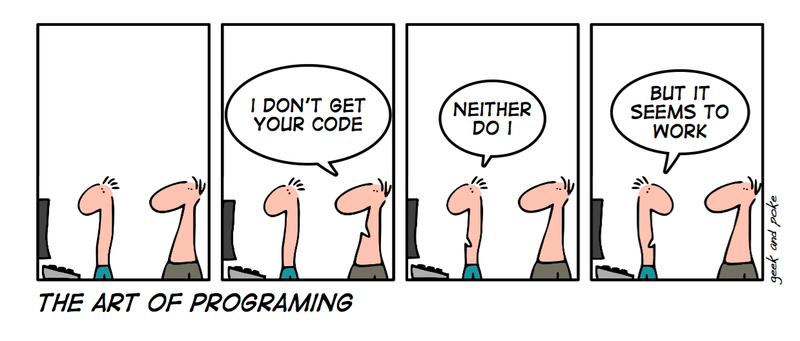Large companies spend millions on hiring third-party contractors or employees to handle the quality control of their precious products.
What is Quality Control ?
Quality Control is an important basic of software testing. It is the process that verifies the product respects the functional requirements. Businesses seek quality control by continuously maintaining and improving their products’ quality. To achieve quality control, businesses create environments where their employees and managers can strive for success. They do this by giving training, by creating benchmarks for the products’ quality, and by testing their products as a whole to see if every requirement is respected.
The most important aspect of quality control is to have clear and well-defined requirements. With a good understanding of the requirements and how to achieve them, employees will strive in the making and maintaining of a product. The employees do so by unit-testing different parts of the system. Then, they determine if the feature meets the requirements and if it is required for the final product.
/GettyImages-602922087-27d2836e6f6b46abaeb1295ae238208b.jpg)
Key Benefits of Quality Controls
- Loyal customers, because of how the final product looks and that all of their demands on the product (features/requirements) are met.
- Repeated business. This comes with loyal customers. They will often like to repeat business with your company because of the points stated beforehand.
- Customer referrals. With the satisfaction that your customers will get from your products, they will likely refer your company to others.
- Improved safety. With a lot of unit tests, the system will likely be a lot safer, because of the security breaches that will be found in the testing phase of the development of the project.
- Improved market position. With loyal customers ,repeated business and customer referrals, your business will strive and will grow a lot with the implementation of quality control.
- Reduced liability risk. Because of the unit tests, there will be a lot less bugs and significally less chances that system breaking bugs appear in the final product that you will give to your customers.

What are Code Reviews ?
Code reviews help to improve the quality of the code from other programmers. It may help find bugs that were not seen at first sight, improve the code quality, naming convention, Typo errors, etc. When an error is found, the code reviewer should notify it explicitly to the code writer.
The error should be explained, as a possible fix if possible. If the issue is not an error but rather a naming convention, a typo error, it should be reported as well. Code reviewers can also suggest changes, like using an appropriate new algorithm that suits well the situation. Things like code complexity, scope, size, security measures, abstraction, should be taken into account while doing code reviews.
The code reviewer must keep in mind the goal of the submitted goal and evaluate if the goal is reached too. Unit tests in the program, with another already submitted testing, should be run by the code reviewer to validate if the code passes them. To review some code like HTML, CSS, and else, code reviewers online can be used like validator.w3.org or CSS validator.

Quick stop! Want to learn more about us and what do we have to offer? Go surf our Main Page!
Types of Code Reviews
- Formal code reviews are code reviews based on a formal procedure. The most popular implementation of this type of code review is the Fagan inspection, which consists on evaluating 6 steps: planning, overview, preparation, inspection meeting, rework and follow-ups. There type of code reviews is not very used since it is a complex long process, it is mostly used for huge projects that need to reduce their error range as much as possible.
- Lightweight code reviews are mostly used in these days in development teams. Suppose that your collegue is standing behind you as you go through your code, and both of you look for bugs. This would be considered as light-weight code review.
- Asynchronous code review consists of the programmer making the code available for review and immediately start their next task. The reviewer will review the code at another time, depending on their schedule. Version Control Tools like GitHub are used for this type of review.
User Acceptance Testing (UAT)
User Acceptance Testing (UAT), also known as UAT Testing, is “a process of verifying that a solution works for the user” (Usersnap). In other words, UAT is a series of steps that ensure the satisfaction of the user and validates the system. This type of testing is the last stage of Software Testing since this is where the user of the said system will come in and test the software in order to corroborate that it meets all the requirements. This last step of software testing is a critical procedure to follow before the software is issued to the market.
If it is of any help, you may have heard of the words Beta, Application, End-User Testing. Well, in the web development business, User Acceptance Testing (UAT) refers to all of those terms. This type of Testing absolutely requires the user to be present and test the software himself. Moreover, every stakeholder group of the said system must be included because they still have resources to lose if the software is to fail.

When to start UAT Testing ?
As soon as the application software for the system is ready to execute the purpose efficiently, one must start UAT Testing. No errors or major defects should be detected when taking on this last phase of software testing since the user should be able to confirm that the product meets the requirements.
Moreover, all phases of Testing, which includes Unit Testing, Integration Testing & System Testing, must be finalized. However, note that the Application Software doesn’t have to be completely finished, some errors could be allowed on optional features, such as the application’s cosmetics.

So! That was quite some information you had to absorb. However, you now have a better idea of how large companies operate when it comes to making sure their product is ready to be published on the market.
